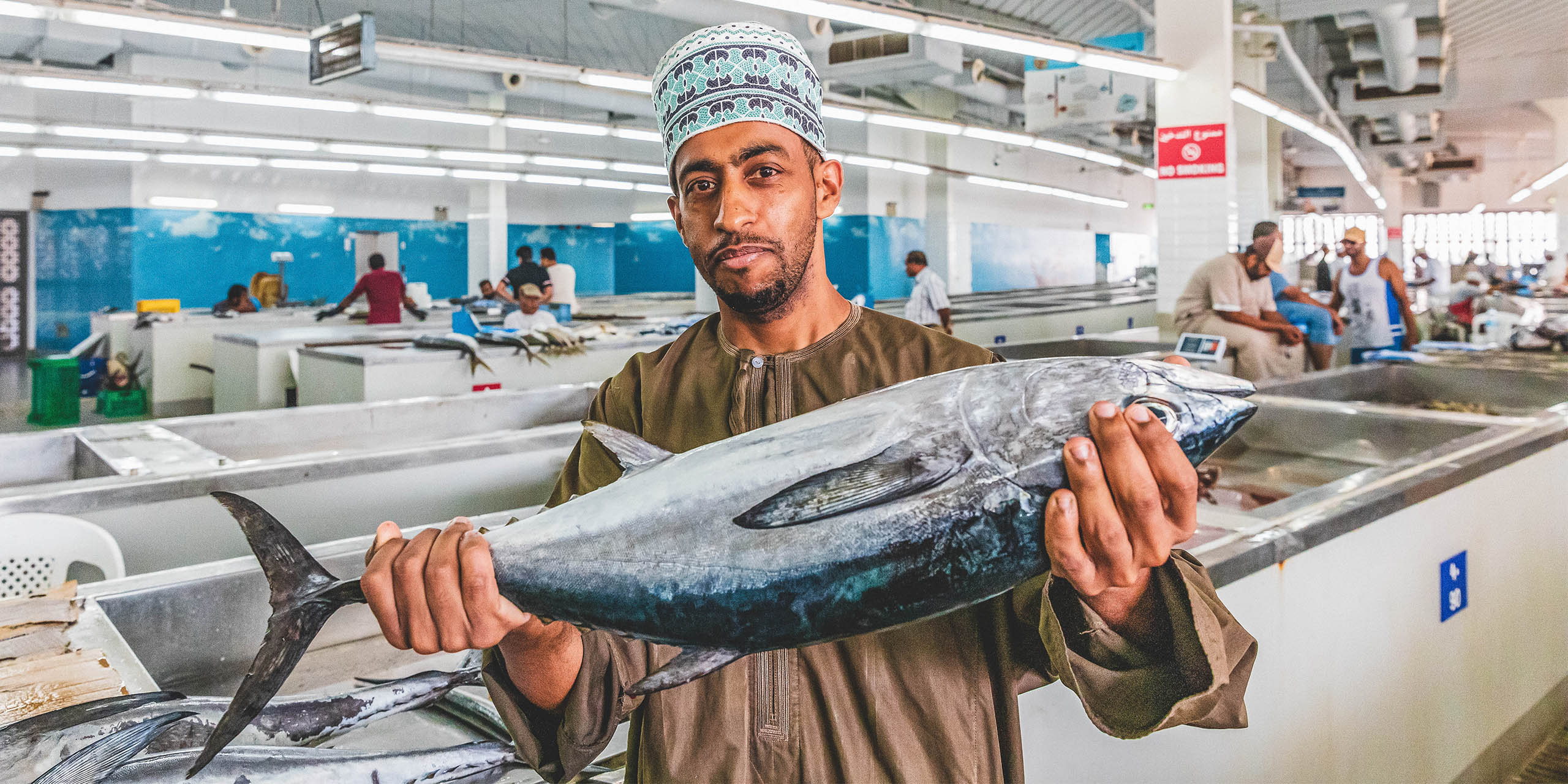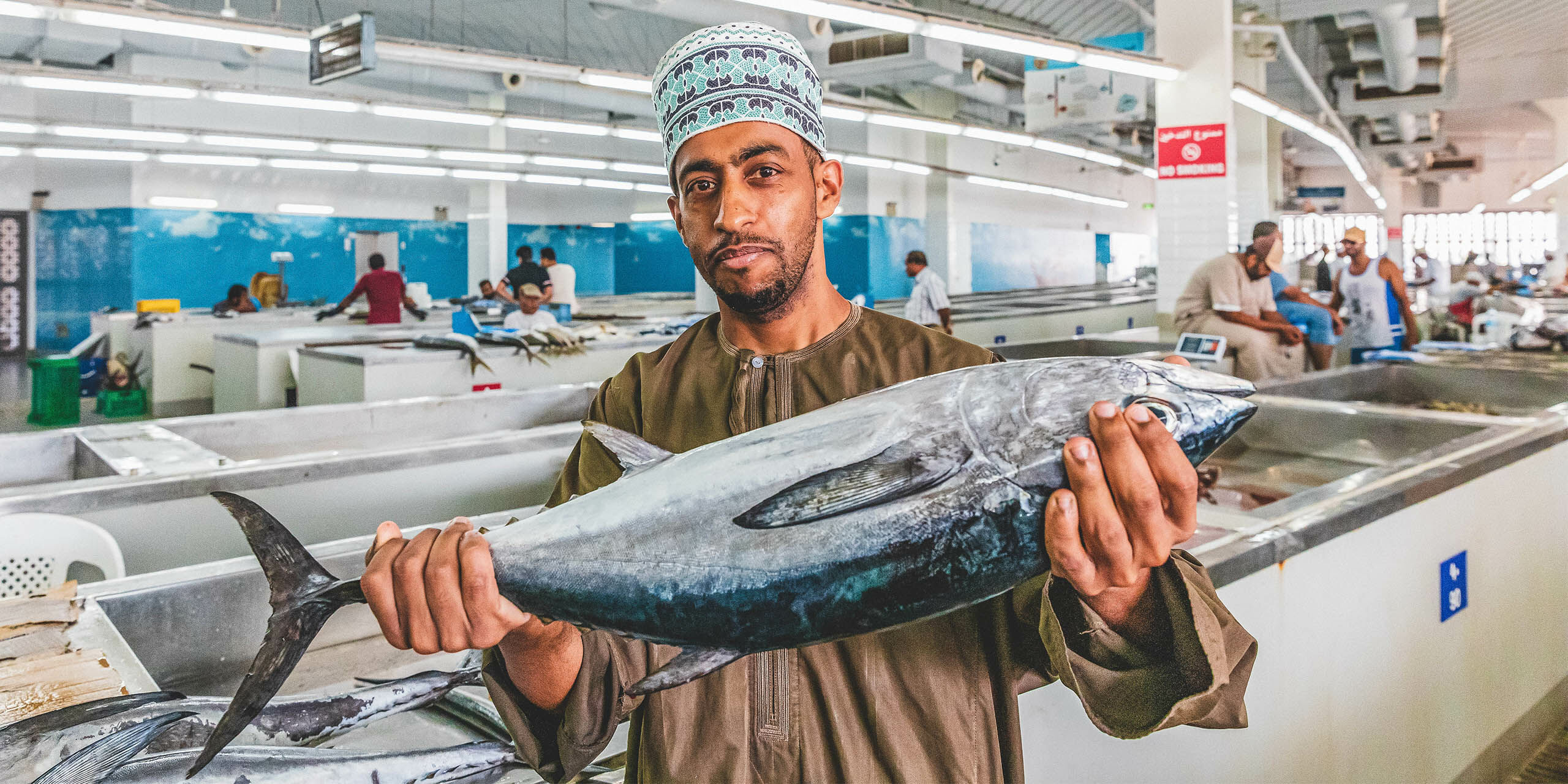
Muscat may be one of the less frenetic capitals in the Muslim world, but the city rarely lacks color – even in the witching hours of the day.
The dawn is barely breaking over Muttrah corniche. And the peace of my morning stroll to Oman’s biggest seafood market is punctured by violent cries.
I look for the source of the commotion. Soon Muttrah’s main souq—one of the oldest and most atmospheric marketplaces on the Arabian Peninsula—will be a hive of activity.
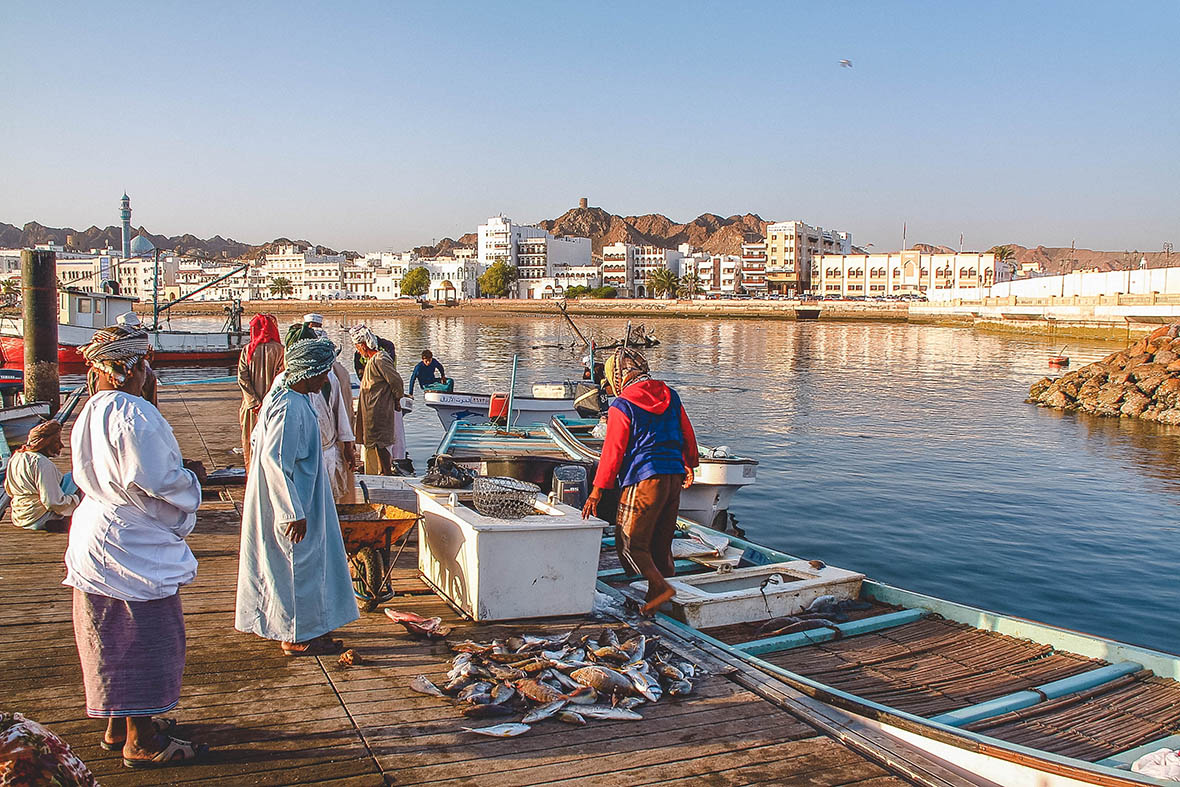
For now, though a single stallholder half-heartedly arranging his textiles on the shaded pavements is the only concession to life in the famous old enclave: an ancient port that was once the center of commerce in Oman before the discovery of oil.
Things are busier by the water, where an altercation is breaking out on one of the boats roped to the walls of Muscat Harbour.
Lusty yells fill the still, salty morning air as rough-hewn fisherpeople rush down to the scene of the struggle. Some observe in stoic silence as the violence unfolds. Others offer vocal encouragement to the protagonists.
In the red corner is a net bulging with mackerel making a final desperate play for the depths of the sea. In the blue corner are the doughty men charged with bringing in the mighty catch.
I observe this epic push and pull between man and marine life alongside Rashid Al Riyami, a 71-year-old fisherman who has agreed to show me around the city’s spanking new 4000sqm fish market.
As you might expect from a guy who has spent most of his life earning a living from the rich marine fruits harvested from the Gulf of Oman, Rashid knows Muttrah like the back of one of his heavily calloused hands.
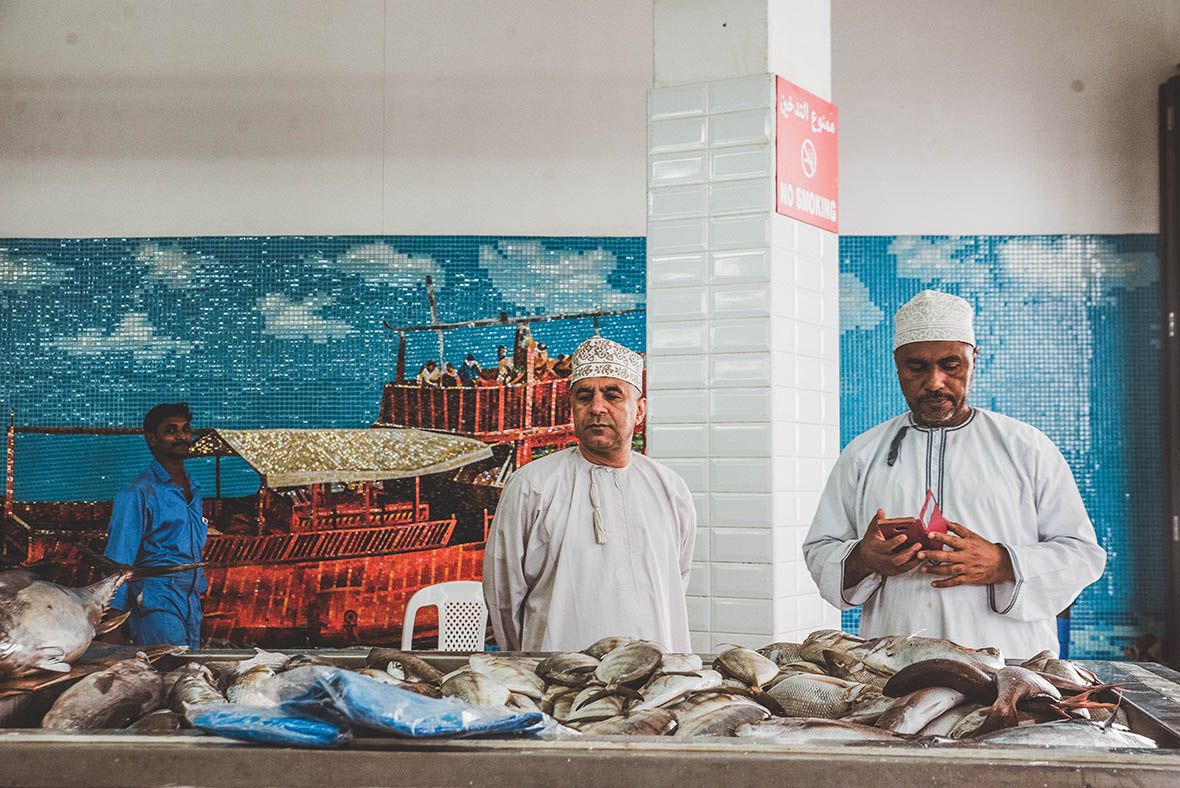
There’s no better person to offer insight into Oman’s link with the ocean. It’s an unshakeable bond forged via a strong tradition of seafaring as well as the remarkable biodiversity and abundance of seafood found along the nation’s 3165-kilometer coastline.
“When you consider how much ocean we have access to here, it would be strange if seafood didn’t play such a central role in the Omani diet,” chuckles Rashid as he leads me from the harbor into the fish market.
Muscat has seen many changes in recent years. A spectacular manifestation of this evolution is the new market. The building was designed by Norwegian architecture practice Snohetta. And the modernist canopies and angular walls of the building are the epitomai of clean Scandi design. Inside on the market floor, an earthy Omani spirit remains intact.
As I move down the aisles, I see blocks laden with fresh kingfish, squid, bream, and snapper. Giant tanks contain lobster, prawns, squid, and baby sharks. Vendors, meanwhile, skilfully hew slices from mammoth tuna as Omani men—resplendent in their spotless white dishdasha and colorful kumma caps—indulge in some good-natured haggling.
Better refrigeration and storage at the new facility have toned down the fish market experience. There’s little in the way of blood and gore on the spotless floors, while the presence of coffee shops and a fresh market contribute to a more family-orientated atmosphere. Nevertheless, the sheer variety of marine life and the combined energy of buyers and vendors make for an excursion that is rarely less than visceral.

“Fisheries are the second-largest resource in Oman,” says Rashid as we make our way to the market’s rooftop café to take in the morning air.
“Before oil was discovered here in the 1960s, Omanis depended on agriculture and fishing. Therefore, fish and seafood remain a huge part of the local diet. Truly we are fortunate that nature has blessed us with such a variety of seafood.”
I get several opportunities to reflect on this stroke of gastronomic good fortune throughout my next couple of days in Oman.
At Bait Al Luban, a delightful restaurant housed in a renovated khan (guesthouse) in Muttrah, I savor a crash course in Omani cuisine – a subtle melange of flavors, spices, and cooking styles that draws on Indian, Persian, and African influences.
Seafood is the star attraction in dishes such as samak maqli (snapper marinated with lemon, garlic, chili, and fried whole) and saloonat rubyan (Omani prawns in a coconut curry base).
I manage to tick off several other memorable seafood-focused dining experiences during my stay.
At a bare-bones venue near Muttrah souq, I sample a traditional Omani fish soup made with tuna, garlic, ginger, cilantro, tomato, and lime juice. Rashid, meanwhile, is kind enough to invite me into his family home to watch his wife prepare a homely stew flavored with malleh (Omani preserved fish).
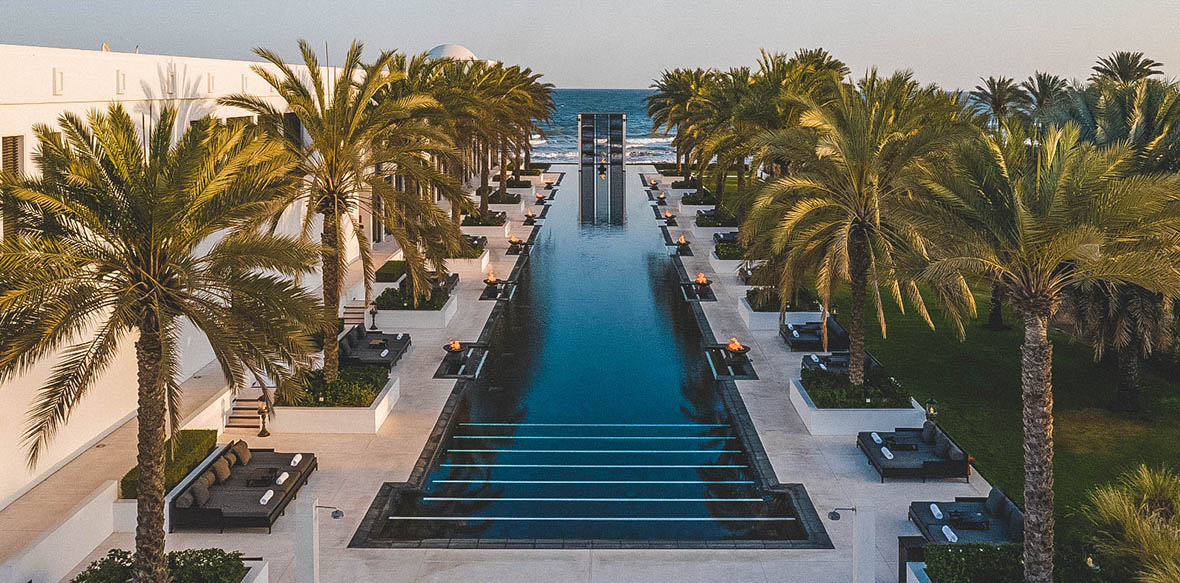
A throwback to the days before refrigeration when the only way to keep fish in the harsh Arabian climate was to preserve it, malleh is flavored with thyme and chili, which imparts deep umami tones on even the humblest creation.
The pinnacle of my pescatarian odyssey comes at The Chedi where a sumptuous seafood banquet under the stars at The Beach restaurant makes for a fitting finale to my time in Oman.
“We keep things very simple here,” the chef tells me, as he presents me with the restaurant’s signature Omani seafood platter – a dizzying array of perfectly grilled and seasoned fish and crustaceans. “There’s no point in us overwhelming the intrinsic flavors of the seafood. We prepare it carefully and let things take their course from there.”
As I tuck into sweet lobster and the delicate flesh of local species like sharri and hamour, the soft beach sand massaging the inside of my toes, I reflect on the skirmish by the harbor. Here, below the night sky, all is quiet. But I can see why you’d fight to get your hands on seafood of this quality.

